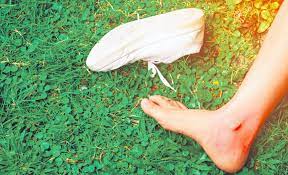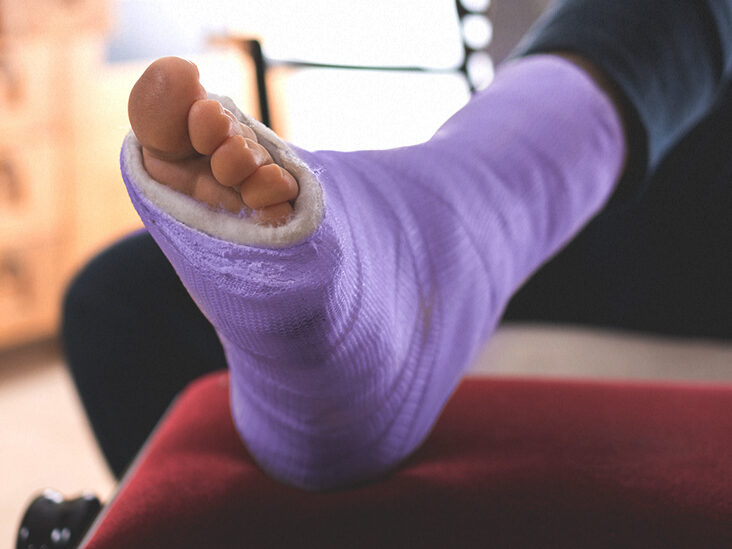Broken angle, you may be wondering how to walk again. It can seem daunting, but with the proper rehabilitation and exercise, you can be up and walking in no time! In this blog post, we will discuss the basics of walking after a broken ankle. We’ll also provide some tips on how to make the process easier and less painful. So read on for everything you need to know about walking after a broken ankle.
Contents
What Is a Broken Ankle?

A broken ankle is a break in one or more bones of the ankle. It commonly occurs when you roll your foot inward while walking or playing sports. This can cause the bones to rub against each other and break. There are three bones in your ankle joint: the tibia (shinbone), the fibula (smaller bone on the outside of your ankle), and the talus (the bone that sits between the tibia and fibula). A break can occur in any of these bones. A broken ankle can range from a simple break in one bone to multiple fractures. The more bones that are involved, the more severe the injury is.
The most common symptom of a broken ankle is pain. You may also hear a snapping or popping sound at the time of the injury. Swelling, bruising, and tenderness are also common. You may have difficulty walking or bearing weight on your ankle. In severe cases, the bones may protrude through the skin.
Tips for walking after a broken ankle

There are various tips on how to walk after a broken ankle. they are as follows:
Assistive Device
The use of an assistive device, such as a cane or crutches, can help take some weight off your injured ankle and prevent re-injury. It includes:
Cane: A cane is held in the hand on the opposite side of your body from your injury. For example, if you hurt your right ankle, hold a cane in your left hand. Start with the cane in your hand that’s furthest away from the stairs.
Crutches: Crutches help take all the weight off your injured ankle or leg. There are two types of crutches: underarm and forearm. You’ll likely use underarm crutches, which go under your arms and have hand grips. Forearm crutches go around your forearm and also have hand grips
Walking boot: A walking boot is a stiff-soled shoe that helps keep your ankle stable. It has a Velcro strap that goes over the top of your foot and up your calf.
If you use any type of assistive device, be sure to follow your doctor’s instructions on how to use it correctly.
Exercise
A physical therapist can help you gradually regain range of motion and strength in your ankle through a series of exercises. Gentle walking is a great way to reduce swelling and improve your range of motion. Start with short walks, and gradually increase the time and distance you walk.
It’s important to follow your physical therapist’s guidance when doing these exercises, as they will be able to adjust the difficulty level based on your healing progress.
Muscle strengthening exercises
There are many different exercises that can help to strengthen the muscles around your ankle. Some of these exercises may be done with resistance bands or weights, while others may simply involve using your body weight.
Here are some examples of exercises that can help to strengthen the muscles around your ankle:
1. Heel raises: Slowly raise up onto your toes, then lower back down. You can do this exercise with or without weight.
2. Toe raises: Slowly raise your big toe off the ground, then lower it back down. Again, you can do this exercise with or without weight.
3. Calf raises: Place your feet shoulder-width apart and raise up onto your toes. Hold for a second, then lower back down. You can do this exercise with or without weight.
4. Ankle rotations: Sit on the ground with your legs out in front of you. Slowly rotate your ankles in a circle, both clockwise and counterclockwise.
5. Ankle pumps: Sit on the ground with your legs out in front of you. Pump your ankles up and down, as if you are pedaling a bike.
Doing these exercises regularly can help to strengthen the muscles around your ankle, which can in turn help to prevent future injuries.
Walking instruction
Walking with a broken ankle can be difficult and painful. However, it is important to start moving as soon as possible to avoid further injury and speed up the healing process. Here are some tips on how to walk with a broken ankle:
- Put less weight on the injured ankle by using a crutch, cane, or walker.
- Keep the foot elevated as much as possible to reduce swelling.
- Wear a supportive shoe or boot to stabilize the ankle and prevent further injury.
- Take pain medication as prescribed by your doctor to help manage the pain.
With some careful planning and guidance, you can safely walk with a broken ankle. Talk to your doctor or physiotherapist for more information.
Gait Training
After an ankle injury, you may need to relearn how to walk. This process is called gait training. Gait training helps you regain strength and movement in your ankle. It also helps you improve your balance and coordination.
It is important for regaining function and preventing further injury. It is often started soon after the injury. However, you may need to wait until the swelling goes down and your pain decreases.
Your doctor or physical therapist will design a gait training program that is right for you. The program will depend on the type of ankle injury, your age, and your overall health.
Reducing Swelling
You can reduce swelling by giving a massage. For the first few days, apply ice to the area for 20 minutes each hour. After that, you can use heat to help reduce stiffness and pain. Apply heat for 15-20 minutes at a time. You can also wrap the area in an elastic bandage. Do this for the first few days, or until the swelling goes down. You can also take over-the-counter pain medicines to help with pain and swelling. Talk to your doctor before taking any medicines.
It is important to talk to your doctor before beginning any type of massage or exercise. Massage should not be done over broken skin, open wounds, or areas where there is inflammation. If you are pregnant, have a medical condition, or are taking medication, please consult your doctor before receiving a massage.
If you have recently broken your ankle, it is important to start walking as soon as possible. Walking will help to increase the range of motion in your ankle and reduce the risk of developing scar tissue.
Conclusion
It may be concluded that walking after a broken ankle can be difficult and may require a lot of effort, but it is possible to do so with the proper rehabilitation and support. With time, most people are able to return to their previous level of activity. However, some may experience long-term effects, such as arthritis, which can limit function. Therefore, it is important to discuss any concerns with a doctor before beginning any type of physical activity.
Physical Therapy help patients recover from pain. If you’re experiencing Back pain, Shoulder pain, Knee pain, Neck pain, Elbow pain, Hip pain, or Arthritis pain, a physical therapist at MantraCare can help: Book a physiotherapy session.


